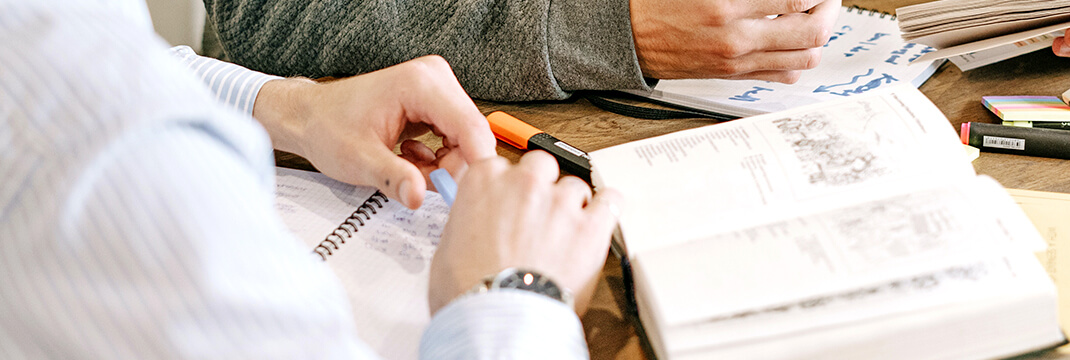
There is no way a student can graduate from college without creating at least one research paper. Of course, in reality, students write many more. For this reason, the knowledge of citation styles is indispensable. Knowing how to cite your sources does not only keep you organized but also helps you avoid problems associated with plagiarism. If you are new to citation styles, experts recommend familiarizing oneself with APA style. This is a citation style proposed by the American Psychological Association and this is the standard format for the majority of papers in social science research disciplines.
Are you tasked with a paper in psychology? Then you will have to organize your bibliography and citations according to the style proposed by APA. In case you are already familiar with some formatting styles, you will see that APA is different from other common styles, such as MLA or Chicago. Although mastering APA citation style takes a while, the skill will prove extremely useful, especially for someone majoring in psychology or sociology.
APA: The Basics
The American Psychological Association established the linguistic standards for academic communication on the global level, so APA citation style is something all students pursuing higher education are expected to know. The style is universal, numerous subtleties and nuances make this style difficult to master.
APA is used in academic documents, for example, scholarly journal articles or books. Usually, APA is the preferred style when citing sources in papers within the field of social and behavioral sciences. Students can learn more about the style from the APA style manual. Papers published within the social sciences are usually formatted according to APA. The latest APA edition (6th) provides recommendations on how to cite sources both on the text and on the reference page. There are noticeable differences between new and old editions of APA and students are expected to use the latest editions in their works.
APA is designed to make complex topics and complicated papers easier to comprehend. The body of the paper is usually broken down into sections, making it easier to read. Due to the uniform format, it is easier for the reader to track the sources and citations, thus formatting gives your paper better flow and keeps the reader focused.
In other words, APA improves paper organization and guides the reader through the paper, making it easier for them to understand and evaluate the content.
For college students, APA is particularly helpful because it gives a paper sound structure, professional presentation, and academic weight. The guidelines recommend the most appropriate font type and size, margin settings, and level headings and explain how to organize tables, charts, and other graphic elements. Papers formatted according to APA are divided into clear sections, so the readers know exactly where to find the information they need. A typical research paper will be comprised of an abstract, main body, reference page, and appendices. The division into sections enhances the readability of the paper, as it enables quick search through the document and allows readers to compare the information within the document.
You may find this article Buy APA Reasearch Paper interesting.
APA formatting makes student papers appear credible and legit. The objectivity of writing and the availability of in-text citations and bibliography help the author establish credibility. With a full list of references, it is easy for the reader to locate and access the cited material, so it becomes clear that the discussion is fact-based and reliable. Whether the purpose of a paper is to review the existing literature or provide clear evidence to support the author’s argument, the author makes it possible for the readers to fully investigate and evaluate the content of the paper proposed to them.
A Word on Plagiarism
Plagiarism is strictly forbidden in academic writing and APA provides clear guidelines on how to avoid it. Citing sources properly and giving credit to other researchers’ publications teaches students the value of scholarly research and proves the worth of their own efforts. The consequences of plagiarism in a paper, even if it is unintentional, include failing grade for the project, dismissal from the course, or, in more serious cases, expulsion from the college or university.
Clarity
APA recommends making papers clear and concise as well as written in the appropriate tone. APA also shows how students can choose the most suitable structure and vocabulary to present the information they have synthesized. Additionally, the guidelines proposed by APA teach how to avoid biased and subjective language, thus ensuring the effectiveness of communication between a student and their intended audience, such as professors and peers.
Knowledge of APA gives an opportunity to participate in a worldwide academic conversation. APA presents the best practices in formatting a paper and using outside sources.
How to Format a Page in APA
APA offers clear and consistent guidelines on how to format papers every time. Consistency is the key to the proper organization of research arguments. The formatting style provides clear directions on how to create every element of the paper, from the title page to the section headings.
Another useful feature of APA is that it instructs authors on organizing their papers in the same way that researchers do. There is a spin-off benefit to this, and that is that once you learn APA, you will be able to read the scholarly sources easier and faster.
APA-formatted paper, whether those published in scholarly journals or the one submitted for a class contain all or some of the following sections in the same order:
- Title page
- Abstract
- Introduction
- Literature Review
- Methods
- Research and Findings
- Discussion
- Conclusion
Some of the above might be omitted depending on the purpose of the paper, but you will still use most of them in each paper you write.
You may find this article useful: Writing Assignments in Psychology
How to Use Outside Sources and Avoid Plagiarism
To plagiarize means to copy someone else’s ideas without giving credit to their author. The guidelines below will protect you from plagiarism:
-
- Use in-text citations each time you copy or paraphrase information from someone else’s publication. Note that each time you use three consecutive words verbatim you have to put them in quotation marks and provide a page number if applicable.
- In-text citations should always have a corresponding entry on the reference page
- Both in-text citation and the corresponding entry on the reference page should start with the same name as the author or organization. This is necessary for the reader to easily locate the source that is being cited.
Establishing Credibility
Authors who use APA correctly make their publication look credible. A student who submits a paper written in perfect APA shows that its author ‘speaks’ academic language well. Just by looking at paper formatting and credible sources on the reference page, a professor can tell whether a student’s research should be taken seriously.
Before you begin writing a paper, set the basic layout parameters, such as 12p font size, double-spacing, and 1-inch margins.
An APA-formatted research paper should have an informative, succinct, and clear title. Apart from giving the readers a good sense of what the paper is about, the title should be characterized by brevity and should not exceed twelve words. For example, a title such as “Health, Lifestyle, and Cities” is ambiguous and too short, which makes it more suitable for a website article than a research paper. A better version of the title would be “The Influence Lifestyle on the Perception of Healthcare Services in Cities.”
The paper title should be centered and appear on the title page. Additional information to be included on the title page is your name and the name of your college or university. For example:
The Influence Lifestyle on the Perception of Healthcare services in Cities
Rwanda Tomson
University of Toronto
There should be a header on each page. The header includes the paper title types in all capital letters and the page numbers. However, the header should not exceed 50 symbols, so if the title of the paper is longer than that, use its shortened version.
The page number should appear in the upper right and on the same line as the title. Use automatic page numbering.
The first section of the paper is the introduction. Note that unlike some other citation styles, APA does not recommend using the heading ‘introduction’. Simply write the title of the paper at the top of the page followed by the introductory paragraph(s). The most important components of the introduction are the hypothesis and a brief explanation of how you arrived at it. Keep your readers interested but remember that you are writing a scholarly paper, so mind the tone.
The next section is the methodology. Describe the participants, the material used, and the way the research was conducted. Use corresponding subheadings. Remember that APA provides guidelines on how to format level-1, level-2, etc. headings.
Share your results in the ‘Results’ section. All supplementary materials, such as graphs and tables, should be properly titled and have corresponding in-text citations.
The last section of the paper is titled ‘Conclusion’ and is followed by a complete list of references.
A separate page should be devoted to the abstract, which should be between 150-200 words. Include keywords at the end of the paragraph. This section appears at the very beginning of the paper but it should be created only after all other sections are complete.



